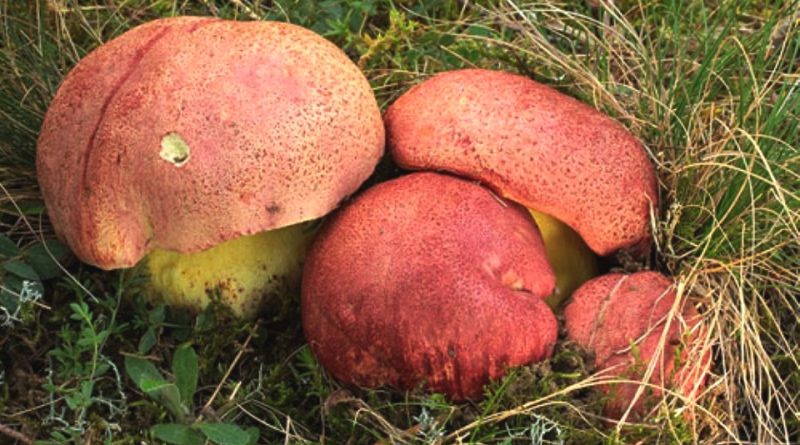Boletus regius
Boletus regius
The Royal Boletus or Butter Boleto (Boletus regius Krombh., 1832) is a symbiotic edible mushroom from the Boletaceae family.
Systematics –
From the systematic point of view it belongs to the Domain Eukaryota, Kingdom Fungi, Basidiomycota Division, Class Basidiomycetes, Order Boletales, Family Boletaceae and then to the genus Boletus and to the species B. regius.
The term Butyriboletus regius (Krombh.) Arora & J.L. Frank 2014.
Etymology –
The term boletus is of controversial etymology: according to some it derives from the Greek βωλήτης bolétes, with which the Greeks called a kind of mushroom (from βωλος bólos with the meaning of gleba, clod, bush, because growing among the clods or bushy places); others instead believe that the meaning of βωλος is to be extended to the ball, since the hat of most mushrooms is globose; for other authors it still derives from Bolites name with which the Romans indicated the best edible mushrooms, even if originally referred to only the ova (Amanita cesarea), but soon used to call also porcini. The specific regius epithet comes from rex, régis re: regal, worthy of a King by color, bearing, size or other characteristics.
Geographic Distribution and Habitat –
Boletus regius is a fungus that grows under deciduous trees, especially beech, and bears fruit in the period between spring and autumn. It is not a very common mushroom but quite sought after in growth areas.
Recognition –
The Royal Boleto is recognizable by its 5-15 cm diameter hat, fleshy, spherical and then expanded with a smooth cuticle, glabrous, reddish-brown, bright red, pink or purple, finally also yellow-olive. The pores are round, appressed, yellow-gold, then olivastri. The tubules are almost free at the stem, golden-yellow, then olive-colored. The stem can reach up to 4-5 cm in diameter, cylindrical, widened at the base; with pale chrome-yellow color, rarely red-carmicino towards the hat, unchanging to the touch, adorned at the top of a thinly woven mesh net at the bottom. The flesh is firm and hard, yellowish and reddish under the cuticle, rarely turning when cut; rosy at the bottom of the stem, with a little perceptible odor, slightly fruity and a pleasant and sweetish taste. Under the microscope are spotted fusiform, brown-olive in bulk, 12.5-17.5 x 3.5-5 μm.
Cultivation –
There are no reports of attempts to cultivate the Boletus regius.
Uses and Traditions –
Recently (2014) following molecular studies, David Arora and Jonathan L. Frank segregated in the new genus Butyriboletus the species belonging to the genus Boletus distinguished by the subtle coloring of the hymenium, the stem and the meat that are reminiscent of natural butter; for this reason in the United States these species are commonly called “Butter Boleti”.
This species is confusing with the Boletus pseudoregius, which is however more slender and with the meat that veers more clearly.
Moreover, the contrast between the golden yellow of the stem and the pores with the pink-purple of the hat, makes this mushroom one of the most beautiful and spectacular in existence.
Boletus regius is an excellent edible fungus and lends itself to the most varied gastronomic preparations.
Preparation Mode –
As said, fungus of excellent edibility, but to be used mixed with other mushrooms because it is digested with difficulty. It is advisable to consume well cooked. Also suitable for drying. The hard and leathery stem must be eliminated.
Guido Bissanti
Sources
– Wikipedia, the free encyclopedia.
– Cetto B., 2008. Real mushrooms, Saturnia, Trento.
– Pignatti S., 1982. Flora of Italy, Edagricole, Bologna.
– Conti F., Abbate G., Alessandrini A., Blasi C. (edited by), 2005. An annotated checklist of the Italian vascular flora, Palombi Editore.
Attention: Pharmaceutical applications and alimurgical uses are indicated for informational purposes only, they do not in any way represent a medical prescription; there is therefore no liability for their use for curative, aesthetic or food purposes.


